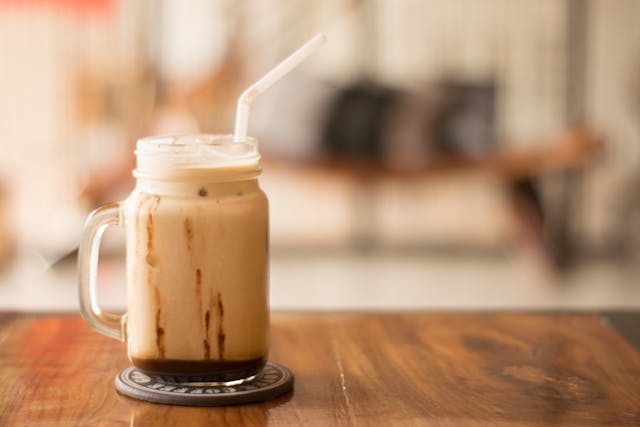Introduction: Why It’s Important to Make Coaster Durable
Coasters are more than just a protective barrier for your table; they’re essential tools for maintaining the longevity of your furniture while adding an aesthetic touch to your decor. Yet, without proper durability, even the most beautiful coasters can fail to serve their purpose. If you want to make coaster durable, it’s crucial to understand the materials, techniques, and maintenance practices that contribute to their longevity.
Durable coasters are an investment in functionality and style. Whether you’re using coasters for everyday use or special occasions, ensuring they are strong enough to withstand moisture, heat, and repeated use is vital. This guide will dive deep into the strategies, materials, and maintenance tips you need to make coaster durable for years to come. From selecting the right materials to applying protective coatings, you’ll find practical, actionable advice throughout this article.
Choosing the Right Material to Make Coaster Durable
The foundation of a durable coaster lies in the material used. Some materials naturally withstand wear and tear better than others, making them ideal for crafting long-lasting coasters.
- Stone and Slate: Stone coasters, particularly those made from slate or granite, are incredibly robust and resistant to scratches, stains, and heat.
- Cork: Cork is lightweight and eco-friendly, offering excellent resistance to water and heat.
- Ceramic and Porcelain: These materials are not only durable but also offer the flexibility of custom designs and glazing for added protection.
- Resin: Resin coasters are becoming popular due to their durability and the ability to customize colors and patterns.
When you choose the right materials, it’s much easier to make coaster durable and suitable for various environments.
Protective Coatings for Enhanced Durability
Applying protective coatings is one of the most effective ways to make coaster durable. These coatings create a barrier that shields the material from water damage, stains, and scratches.
- Polyurethane Coating: This transparent coating is ideal for wooden or cork coasters, enhancing their water resistance.
- Epoxy Resin: Perfect for resin and ceramic coasters, epoxy creates a glossy, hard surface that is nearly impervious to damage.
- Sealants for Stone Coasters: Natural stone can be porous, but a good-quality sealant prevents moisture and stains from penetrating the surface.
Coating your coasters with these protective layers ensures their longevity while maintaining their aesthetic appeal.
Customization Without Compromising Durability
Customizing coasters doesn’t mean sacrificing their durability. In fact, many methods of customization can also contribute to making coasters more robust.
- Engraving Stone Coasters: Laser engraving adds a personalized touch without compromising the strength of stone or slate.
- Printed Designs with Heat Transfer: This method embeds designs into the material, making them resistant to wear and tear.
- Resin Inlays: Embedding decorative items like flowers or glitter in resin can enhance durability while creating a unique look.
The key to balancing customization and durability is to use high-quality materials and techniques that don’t weaken the coaster’s structure.
Maintenance Tips to Make Coaster Durable
Durability doesn’t stop at the crafting stage; how you maintain your coasters plays a significant role in their lifespan.
- Regular Cleaning: Use mild soap and water for daily cleaning, especially for stone and ceramic coasters.
- Avoid Prolonged Moisture Exposure: Even with protective coatings, prolonged exposure to water can weaken some materials.
- Handle with Care: While durable, materials like ceramic and stone can chip if dropped.
By incorporating these simple maintenance practices, you can significantly extend the life of your coasters.
Designing Coasters for High-Traffic Areas
If your coasters will see heavy use, such as in restaurants or cafes, designing for durability becomes even more critical.
- Non-Slip Bases: Adding a non-slip base, such as rubber or silicone, prevents coasters from sliding and reduces wear.
- Thicker Designs: Coasters with a slightly thicker profile are less likely to break under heavy use.
- Stackable Options: Stackable coasters with reinforced edges are ideal for commercial settings.
By focusing on these features, you ensure that your coasters can handle the demands of high-traffic areas.
How Heat Resistance Can Make Coaster Durable
One of the primary functions of a coaster is to protect surfaces from heat. Materials and coatings that resist heat damage are essential for durability.
- Heat-Resistant Materials: Stone, ceramic, and metal are excellent choices for withstanding high temperatures.
- Protective Layers: Adding a heat-resistant layer to your coaster ensures that hot mugs or pans won’t cause damage.
Investing in heat-resistant designs is a straightforward way to make coaster durable and functional.
Eco-Friendly Solutions to Make Coaster Durable
Sustainability doesn’t have to come at the cost of durability. Many eco-friendly materials and methods are ideal for crafting long-lasting coasters.
- Bamboo Coasters: Bamboo is both sustainable and durable, making it an excellent choice for environmentally conscious consumers.
- Recycled Materials: Using recycled rubber or wood ensures durability while reducing waste.
- Natural Sealants: Eco-friendly sealants, such as beeswax, can protect coasters without harmful chemicals.
By choosing sustainable options, you can make coaster durable while minimizing your environmental impact.
Advanced Techniques to Make Coaster Durable
For those willing to invest more time and effort, advanced crafting techniques can significantly enhance durability.
- Layered Construction: Combining multiple materials, such as cork and resin, creates coasters that are both sturdy and attractive.
- Temperature Curing: Using heat to cure coatings like epoxy ensures a harder, more durable finish.
- UV Protection: Adding UV-resistant coatings prevents color fading and material degradation over time.
These techniques are particularly useful for coasters that will be used outdoors or in challenging environments.
Conclusion: The Ultimate Guide to Make Coaster Durable
Durable coasters are more than just functional items; they’re a reflection of craftsmanship, creativity, and thoughtful design. By understanding the best materials, protective coatings, and maintenance practices, you can make coaster durable enough to last for years.
Whether you’re crafting coasters for personal use or selling them as part of a business, durability should always be a top priority. From choosing heat-resistant materials to incorporating eco-friendly practices, the strategies outlined in this guide ensure that your coasters will stand the test of time.
By following these tips and techniques, you’re not just creating coasters; you’re crafting pieces that combine beauty, functionality, and resilience. Now that you have the knowledge to make coaster durable, it’s time to put it into action!

Share this:
- Click to share on Facebook (Opens in new window) Facebook
- Click to share on X (Opens in new window) X
- Click to share on LinkedIn (Opens in new window) LinkedIn
- Click to share on Reddit (Opens in new window) Reddit
- Click to share on X (Opens in new window) X
- Click to share on Threads (Opens in new window) Threads
- Click to share on WhatsApp (Opens in new window) WhatsApp




